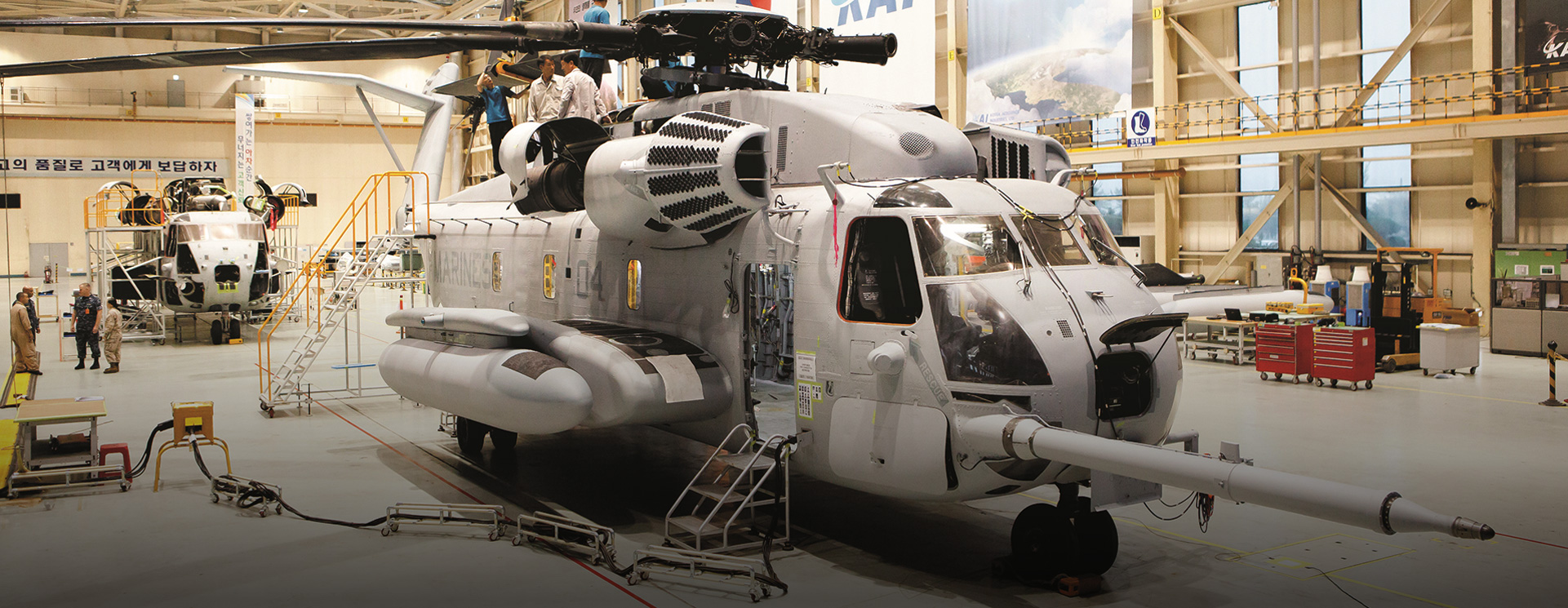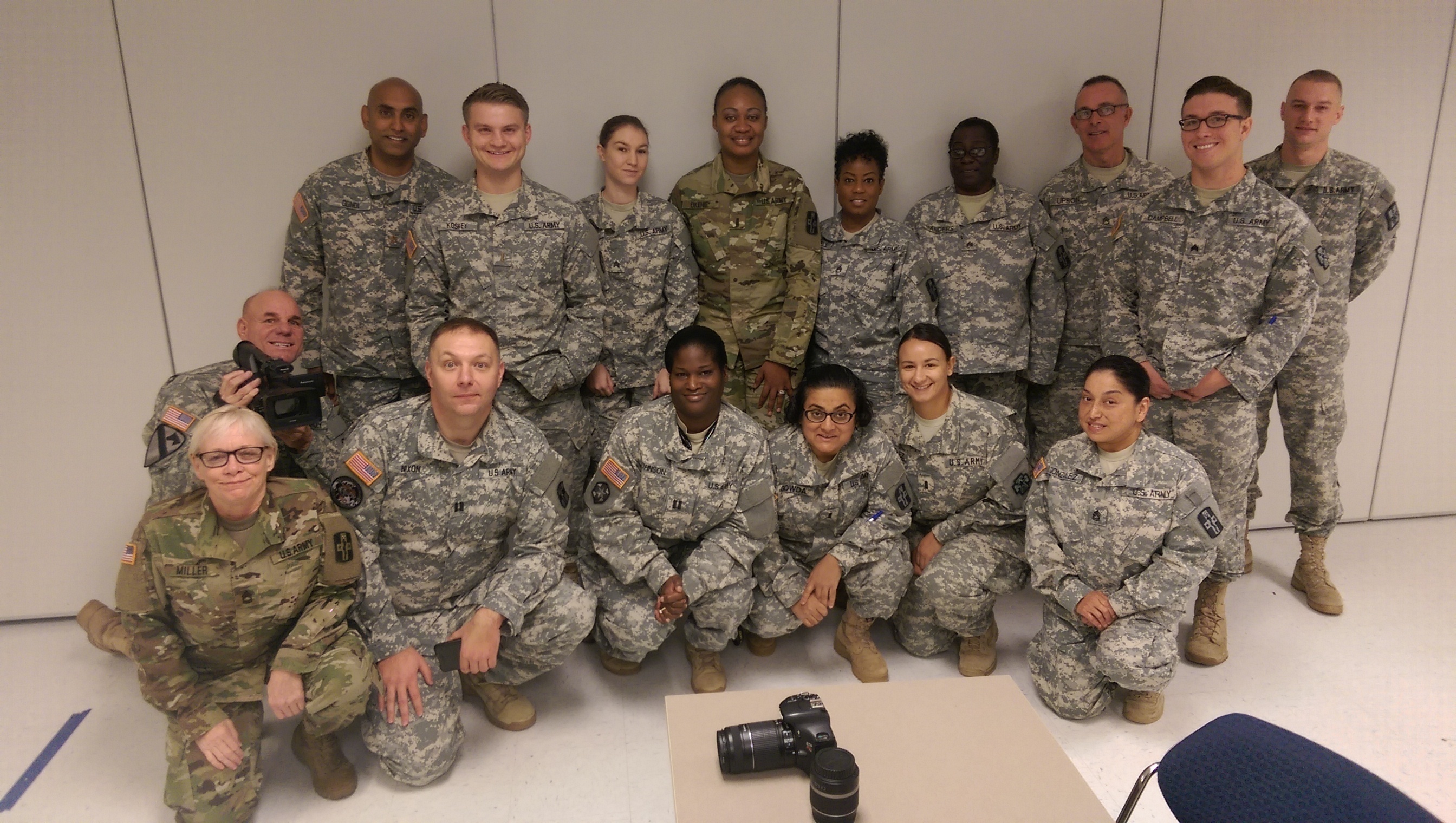Kai Military - Korea Aerospace Industries (KAI) has been awarded a contract to develop a multi-role attack helicopter for the Korean Marine Corps (RoKMC), likely based on its MUH-1 Marineon amphibious helicopter design.
In a regulatory filing dated Oct. 27, KAI said it had reached an agreement with the Defense Acquisition Program Administration (DAPA), the procurement arm of the Ministry of Defense (MND). The development contract, worth 438.4 billion euros ($308.65 million), should be completed within 46 months, the company said.
Kai Military

"The project [RoKMC] includes the development of an amphibious assault helicopter capable of covering amphibious maneuver helicopters and air assault forces, and providing aerial firepower to ground combat forces between deep maneuvers and final operations," KAI said.
Operation Hadin Kai: Goc 7 Division Lauds Troops' Fighting Spirit In Recent Encounter With Bht/ Iswap Terrorists
DAPA first announced the RoKMC attack helicopter requirement on April 26, 2021, and said it would purchase 20-24 rotorcraft at a tentative cost of $1.44 billion. The agency also said the program is expected to begin in 2022 and end in 2031.
Expected roles include amphibious assault operations, particularly on the northwestern islands along the inter-Korean border. The helicopter should be able to cooperate with the Marineon helicopters in service with RoKMC.
No further information was released at the time, although DAPA's Defense Technology and Quality Agency (DTaQ) concluded a year-long investigation that the South Korean Navy's (RoKN) amphibious assault ships could procure indigenously developed helicopters. Will be more expensive than getting a foreign design.
Bidding for the project opened in January 2019 with five bids: Bell Textron's AH-1Z Viper, Boeing's AH-64E Apache Defender, Turkish Aerospace T-129 ATAK and Lockheed Martin - Sikorsky's S-70i. , while KAI and its Marineon KAI, a Korean company, were the only ones to bid.
U.s. Army Sgt. Kai Farris, A Military Policeman Assigned To The 527th Military Police Company, 18th Military Police Brigade, Approaches A Building With His Weapon Drawn During An Active Shooter Exercise Feb
There were also reports at the time that South Korean marines preferred foreign designs, with the Bell AH-1Z and Boeing AH-64E Navy variants seen as frontrunners.
Concept images of the upcoming RoKMC attack helicopter released by KAI show it equipped with a similar weapon mounted on a Light Armored Helicopter (LAH), which is a three-barreled 20mm turret, the Chungum (Blue Sword). Anti-Tank Missiles (ATGM) and 70mm rockets. It is understood that the attack helicopter will also have a short-range air-to-air capability and can carry missiles such as the FIM-92 Stinger missile. KAI LAH (Light Armed Helicopter) is a compact twin combat helicopter. Courtesy of Korea Aerospace Industries (KAI).
The LAH Eurocopter EC155 was developed under an agreement concluded in 2015 between the multinational manufacturer Airbus Helicopters and KAI. It can perform a variety of mission roles, including light assault, close air support, escort and troop transport roles. MD500 Defder and AH-1S Cobra helicopters of the Korean Army (ROKA). On July 4, 2019, the LAH conducted a service flight and is reportedly aiming to complete KAI development by 2022. The company demonstrated several concept variants of the LAH, including unmanned aerial vehicle (UAV) and light unit transport helicopter (LUH) models.

The LAH's origins can be traced back to the Eurocopter EC155, a medium-sized scout helicopter made by multinational manufacturer Airbus Helicopters. In 2015, Airbus Helicopters and Korea Aerospace Industries (KAI) announced an agreement to transfer core EC155 production activities to South Korea. According to the agreement, KAI will be the sole manufacturer after 2018 and the two companies will participate in the international marketing and further development of the type. In addition, the EC155 serves as the basis for two projects led by KAI: the Light Civilian Helicopter (LCH) and the Light Armed Helicopter (LAH).
Chiang Kai Shek With Wife And Military Escort, 1928 Stock Photo
At the time of the deal, Airbus said it expected domestic demand for 100 LCHs and 214 LAHs in South Korea, and was evaluating a 300-400 LAH version for the international market to replace traditional attack helicopters. LAH MD Helicopters is expected to operate MD 500 Defder and Bell AH-1J/S Cobra helicopters for the South Korean Army.
In addition to KAI, South Korea's Defense Acquisition Program Administration (DAPA) and several Korean agencies also supported the project.
In addition, a number of European suppliers are also involved in the program; in June 2016, France's Safran was selected to supply the Turbomeca Arriel power plants for LAH and LCH.
The LAH had many changes from the EC155, including a new cockpit, improved gearbox and redesigned rotor blades. In addition, the LAH is able to wield a variety of new weapons, equip for survival, and carry heavily armed troops.
Operation Lafiya Dole In North East Now Hadin Kai
The flight system includes a 4-axis Automatic Flight Control System (AFCS), and the dynamic system is designed to reduce noise and vibration. A self-sealing fuel tank was also installed.
The LAH is equipped with a variety of avionics and hardware to support its operation; these include a nose-mounted electro-optical/infrared cyclone suite, an integrated target acquisition/designation system, and a self-defense/electronic warfare suite, which includes a radar warning receiver (RWR), Laser warning receiver (LWR), MWR, and beam. /flame spreader.
Includes an accurate navigation system that is said to be immune to enemy GPS jamming. The pilot is equipped with a helmet-mounted display integrated with the fire suppression system.
The LAH is armed with a 20mm triple-barreled turret gun and features main wings capable of carrying 70mm (2.8 in) unguided rockets and air-to-surface anti-tank missiles.
Troops Of Operation Hadin Kai Hands Over 2 Rescued Chibok Girls, 2 Children To Borno Govt
Agcy for Defse Developmentmt (ADD) and Hanwha have developed a new anti-tank missile, originally the TAipers (Tank Sniper) Light Gunship Air-to-Ground Missile (LAH-AGM), which is the main weapon of the LAH. Two CCD TVs and an Imaging Infrared (IIR) seeker provide fire-forgetting capability, and fire-tracking, using the update mode of the optical data link, provide counter-weapon capability. 8 km (5.0 miles) away. Serial production of the missile is planned for 2023, when the LAH will be introduced.
The later Chungum missile was 120 mm (4.7 in) in diameter, weighed 16 kg (35 lb), traveled at 200 m/s (720 km/h; 450 mph), and was equipped with a tandem warhead. Delayed start of combat. LAH can carry four Chungum, two on each side.
In 2021, KAI and Israel Aerospace Industries (IAI) signed a separate memorandum of understanding to develop missiles that could be used on the LAH.
The first prototype was unveiled in December 2018. In April 2019, the LCH conducted its first ground test.
Future Korean Mc X Military Transport Aircraft To Receive Emirati Funding
In December 2020, DAPA announced that LAH was temporarily in combat.
In April 2021, KAI said that air-to-surface missile testing with 20mm cannons and 70mm rockets combined with LAH target acquisition vision will continue throughout the year.
From December 2021 to February 2022, LAH conducted cold-weather testing in Yellowknife, Canada, flying over 40 weeks and testing 165 items over nine weeks. Korea Aerospace Industries (KAI) Light Armed Helicopter (LAH) successfully tested the helicopter's ability to withstand cold weather without affecting its maneuverability and maneuverability, South Korea's Defense Program Administration (DAPA) said on Feb. 18. .

LAH's ability to deploy unmanned teams by 2022 has been formally assessed. KAI says it wants to equip the helicopter with a barrel-launched unmanned aerial vehicle (UAV).
Former Jpn Army Kai 45 Type Summer Clothes Hakama Jpn Small Reproduction Japan
The company has also conceptualized an unmanned version of the LAH, which it plans to operate in conjunction with existing LAHs to reduce casualties on the battlefield.
In September 2022, KAI introduced a new model of Light Fire Helicopter (LUH) designed to support Special Forces operations; The interior nacelle was removed, and winglets similar to the Boeing MH-6M Little Bird were used.
On December 23, 2022, DAPA signed a 302 billion won (US$235 million) contract with KAI to produce 10 LAH units, with deliveries starting in December 2024.

Post A Comment:
0 comments so far,add yours